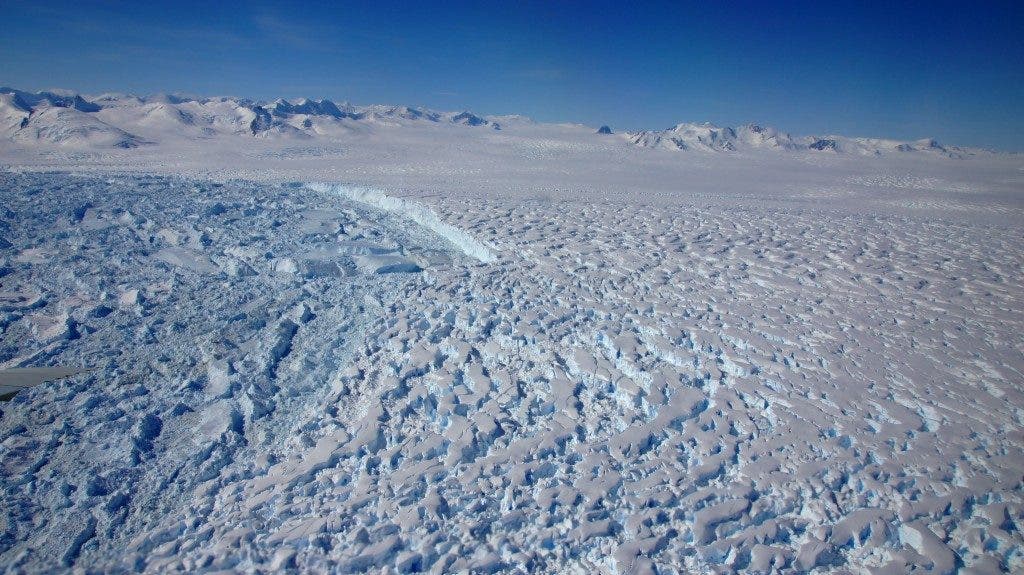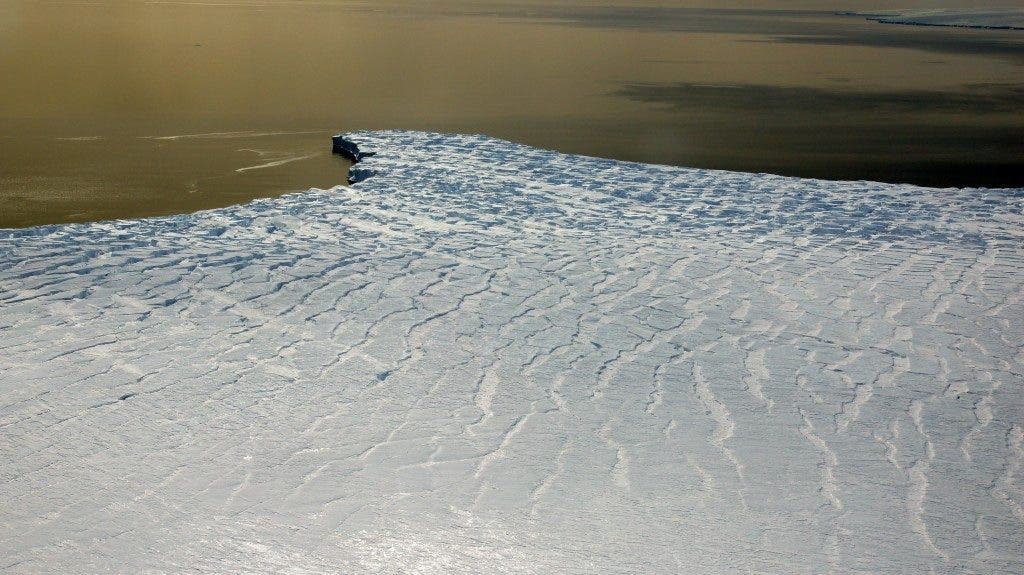A new study analyzes how much Arctic ice can melt before its grounded portion also starts sliding into the ocean.

Calving front of Fleming Glacier, an outlet glacier which fed the former Wordie Ice Shelf, which broke up towards the end of the 1990s. Credits: Matthias Braun, University of Erlangen-Nuremberg, Germany.
The melting of ice can have dramatic consequences on the entire planet. It can not only raise sea levels, but also change marine currents and affect global climate. We know that the floating portion of the ice shelves supports the portion that lies on land, preventing it from flowing into the ocean. If that portion were to flow freely into the ocean, the effects would be drastic.
Johannes Fürst from the University of Grenoble in France wanted to see how interconnected Arctic ice is – that is, how much we can afford to lose before the massive grounded chunks flow into the ocean as well.

Highly crevassed ice front of Ferrigno Ice Stream in the Bellingshausen Sea. Picture taken during the airborne NASA IceBridge campaign on November 16, 2011.
Credit: Matthias Braun, University of Erlangen-Nuremberg, Germany.
Not all areas are similar in this regard, he found. For each individual ice shelf, he calculated the area that can be lost without significant impact. They refer to this area as passive shelf ice (PSI). Overall, just 13% of the ice sheets is PSI, with ice shelves in the Amundsen (7% PSI) and Bellingshausen (5% PSI) seas being the most susceptible to further ice loss.
This indicates that the Arctic ice is in a very fragile equilibrium. If some ice melts, the implications might be more far reaching than we’d expect, and we could be witnessing a snowball effect.
In the Arctic, temperature has increased at twice the rate as the rest of the globe, and could increase by another 8°C (14°F) by the end of this century. Arctic ice has decreased at alarming rates, and will likely continue to in future years.
Journal Reference: The safety band of Antarctic ice shelves.









